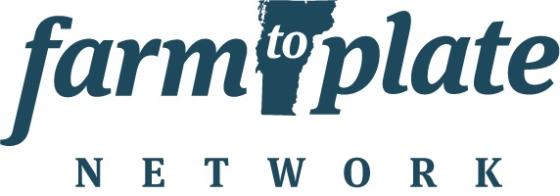Posted October 30, 2013 at 10:19am by
Farm to Plate highlights progress strengthening Vermont’s food system in processing, distribution and education

Killington, VT – Food system leaders from around the state and region convened this week to reflect on progress and plan ahead in the legislatively directed work to relocalize food production and distribution in the statewide effort to rebalance the food system. Over 250 representatives of the 300+ member Farm to Plate Network attended the 3rd Annual Gathering held at Killington Grand Resort yesterday and today.
Members of the Farm to Plate Network encompass all types and scales of agricultural-related production and processing businesses, government entities, educational institutions, distributors, retailers, and dozens of non-profits from food justice to technical assistance providers. Together, the members of the Farm to Plate Network are working collectively to implement the Farm to Plate Strategic Plan—the legislatively directed plan to strengthen Vermont’s food system and double local food production and consumption by 2020.
“Vermonters want to buy local and engage in their communities and you folks are making that happen in Vermont,” Chuck Ross, Secretary of the Vermont Agency of Agriculture, Food and Markets exclaimed at the Gathering. “We are the leader in the country for community based agriculture.”
An event highlight featured three examples of how the Farm to Plate Network is creating positive change in Vermont’s food system.
The Meat Processing Task Force facilitates collaboration between livestock slaughter and processing stakeholders to coordinate business and production technical assistance to expand Vermont’s meat industry. Through the learning and networking that took place at task force meetings over a two and a half year period, Black River Produce was able to make connections with national industry leaders that influenced the successful opening of their meat processing facility in the former Ben & Jerry’s plant in North Springfield last spring.
The Aggregation and Distribution Working Group focuses on getting more local food into institutions and initiated a series of Farm to Institution Forums designed to introduce producers and processors to food service providers. Over 80 participants attended one forum held at UVM where twelve direct local food relationships were made with Sodexo including Kingdom Creamery, Vermont Bean Crafters, and Garuka Bars—2000 of these energy bars made with local ingredients in Winooski are now served monthly at UVM.
The Education and Workforce Development Working Group identified summer learning as an area lacking opportunities for food system education. The group incorporated food industry and agricultural career issues and opportunities into the existing Governor’s Institute framework and held the first Governor’s Institute on Farms, Food and Your Future this past summer. The event, hosted by Vermont Tech, partnered with New England Culinary Institute and Sterling College and will be held again next summer.
The Annual Farm to Plate Gathering provided Network members the opportunity to share challenges as well as progress and strengthen connections across the Network. Network members are poised for year three implementing the Strategic Plan and the Gathering helped create a deeper understanding of the work that needs to be done to build the capacity to create the large scale food system change necessary to strengthen the working landscape, build the resilience of farms, improve environmental quality, and increase local food access for all Vermonters.
In the coming year, Farm to Plate Network work will focus on communicating the stories that showcase how Vermont is reaching the goals of the Strategic Plan and invite a deeper level of agricultural literacy and agritourism opportunities among Vermonters. Career pathways will be more deeply explored to identify and help more young people find sustainable jobs in food and agriculture. The successes of farm to institution will be strengthened and opportunities more deeply developed in colleges, hospitals, and state municipalities. Driving local food into independent Vermont retail establishments is gearing up to be the new frontier in the state’s local food movement as well as expanding wholesale distribution and storage from local to regional.
“Vermont has more land in agriculture than many other New England states, but other New England states have more consumers, so Vermont is increasingly affecting the broader supply chain which aligns with the emerging vision for New England to produce 50% of its food by 2060,” shares Ellen Kahler, executive director of the Vermont Sustainable Jobs Fund, the backbone organization of the Farm to Plate Network.
Both the Farm to Plate Strategic Plan and Network can be fully explored on the new Vermont Food System Atlas website—www.vtfoodatlas.com. The Atlas also serves as a farm and food inventory website and is the communication platform for the Farm to Plate Network.
XXX
The Vermont Sustainable Jobs Fund (VSJF) is a non-profit organization created by the Vermont Legislature in 1995 to accelerate the development of Vermont’s green economy. VSJF provides financing, technical assistance, and networking resources to Vermont businesses committed to creating jobs, products, and services in the fields of renewable energy, sustainable agriculture, and forestry. VSJF programs designed to strengthen Vermont’s working landscape include the Vermont Farm to Plate, Bioenergy, and Harvest for Use Initiatives; the Peer to Peer Collaborative; and the Vermont Agriculture Development Program. Additionally VSJF is the fund manager of the Flexible Capital Fund. More information is available at www.vsjf.org.
